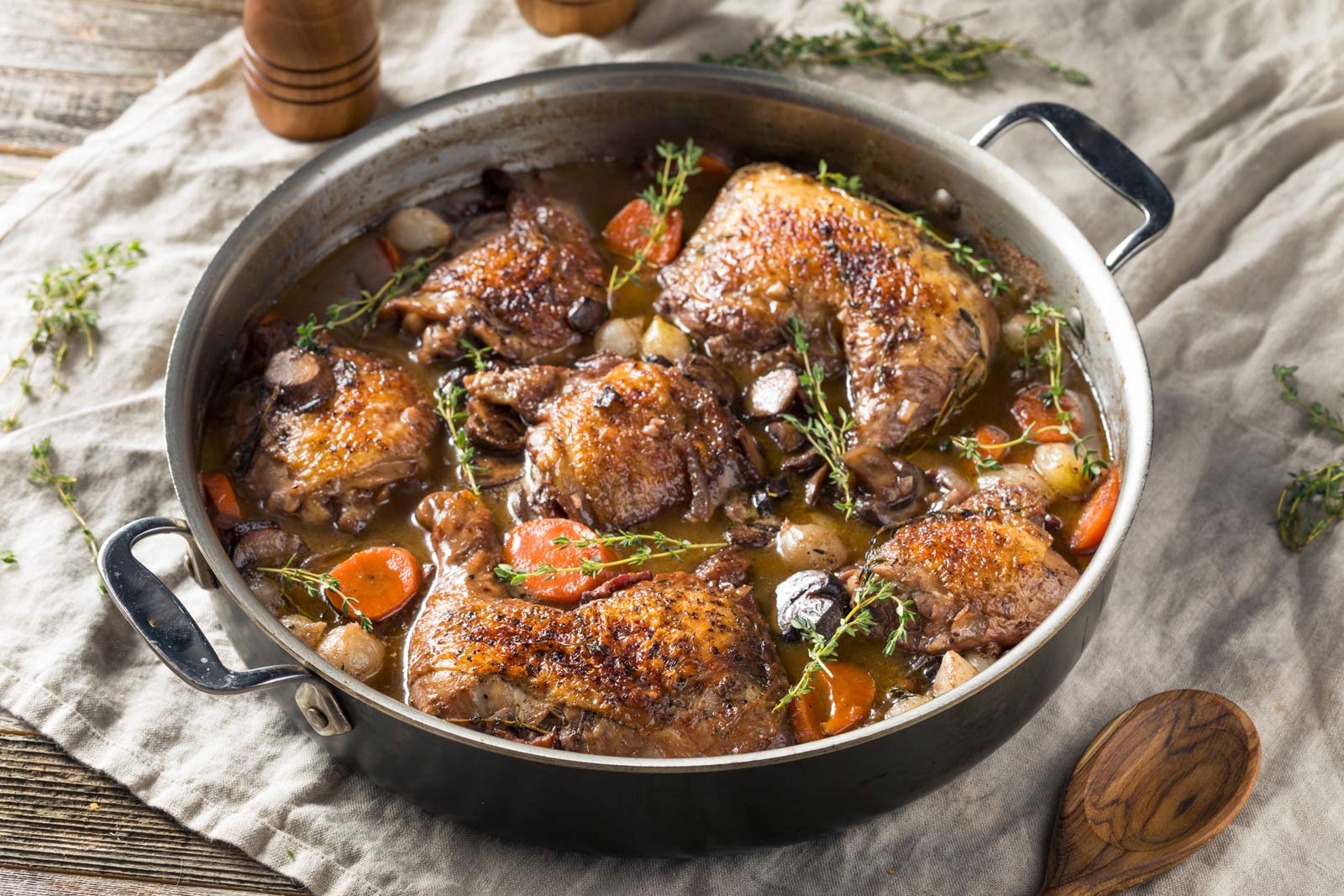Older is Better. Moscato d’Asti Sparkles in Italy
Not All Moscatos are Identical Moscato is one of the oldest known varieties of wine grapes grown in Italy’s Piedmont region, officially recorded in the 13th century, in the town of Canelli. This sparkling wine was cultivated by the...


Not All Moscatos are Identical
Moscato is one of the oldest known varieties of wine grapes grown in Italy’s Piedmont region, officially recorded in the 13th century, in the town of Canelli. This sparkling wine was cultivated by the Greeks under the name Antilico. The Romans renamed it Apianae after the bees (ape in Italian) who are attracted to the grape’s aromas of flowers, white peaches, apricot and sage.
 Giuseppe Benedetto Maria Placido, Prince of Savoy (1766 – 1802)
Giuseppe Benedetto Maria Placido, Prince of Savoy (1766 – 1802)In the 16th century the Prince of Savoy loved the Moscato wine to the point that he decreed that one-fifth of all vineyard plantings in the area be made with Moscato Bianco and anyone planting less would be fined. He stopped importing all other vines to the area, creating a turning point in the history of Moscato.
Giovani Battista Croce, the Father of Moscato d’Asti was a Milanese jeweler for royalty who owned vineyards and experimented with various vine training systems. In his cellar, he perfected the techniques of making sweet aromatic wines with low alcohol levels. People came from all parts of Piedmont to learn how to make his wine. To assist the winemakers in 1606 he published a book, Of the Excellence and Diversity of Wines That Are Made on the Mountain of Turin and How to Make Them. The book became a manual for the local Moscato d’Asti winemakers who wanted to make the best sparkling Moscato’s.
Asti-Method
In his book Croce described the technique used to make d’Asti. As soon as the grapes are harvested, they are de-stemmed and pressed to retain the delicate floral aromas. The must is filtered, and kept chilled until needed. Today the wine is created by fermenting batches of this must in pressurized tanks, often at low temperatures to control fermentation. As the yeasts convert the grape sugars to alcohol, carbon dioxide gas is released as a byproduct. Given both the pressurized nature of the vessel, and the fact that gasses are more soluble at lower temperatures, a greater than usual quantity of this gas is trapped in the wine, creating the all-important sparkle.

When the alcohol level reaches around five percent (official regulations state Moscato d’Asti must be between 4.5 and 6.5 percent alcohol) the wine is chilled and/ or filtered again, killing the yeasts and stopping fermentation. The result? A sweet, lightly sparkling perfumed Moscato d’Asti.
Drinkability
Made in the frizzante style, Moscato d’Asti was originally the wine that winemakers made for themselves. Today, Moscato d’Asti is the most widely consumed sweet wine in the world. It was given a Denomination of Controlled and Guaranteed Origins (DOCG) in February 1994, and is part of the largest and most diverse family of grape varieties known. Moscato d’Asti is produced naturally and there is no addition of sugar or CO2. The gentle bubbles are generated during natural fermentation and the sweetness comes from the natural sugars inherent in the grape.
Twenty-seven million bottles of Moscato d’Asti are produced annually in Italy with 80 percent sold in the USA.
It is a popular beverage among college students and young professionals. Research suggests that hip hop artists and the culture surrounding them have adopted the beverage and it has replaced Champagne as the wine of choice for the entire genre. Because it is low in calories (102 calories per 5 oz. serving), and low in alcohol, it can be enjoyed at lunch and not slow down afternoon work. It is also known as a digestif that cleanses the palate and stimulates an interest in dessert.
Traceability
As consumers express concerns about the quality of food and beverages they are purchasing there is an interest trying to determine if the product is genuine and authentic. The Consorzio per la Tutela dell’Asti DOCG, the body responsible for the certification of the Moscato d’Asti DOCG wines quality, started a study in 2008 looking at the traceability of the wine along the production chain.
Over a three-month period, in collaboration with chemists, oenologists, and winemakers the group looked at the influence of vine culture and oenological practices and their impact on wine. The study also looked at Moscato d’Asti musts to verify how they reflect the features of the different geographical zones and to build a basis to identify possible adulterations performed by addition of foreign musts.
The Soil
Some of the steepest vineyards in the world are found in Asti with slope gradients over 50 percent. Termed “heroic agriculture,” all hillside vineyards are worked by hand. Most plots of land are 4 hectares or smaller with 60 percent of producers working less than 2 hectares of vines. There are approximately 9,700 hectares planed with Moscato Bianco across 52 communes and 3 provinces.
The sites that range from 200-600 meters above sea level are noted for their soil, including:
1. limestone soil: acts like a sponge, soaking up available water and facilitates the absorption of minerals needed to produce healthy grapes; assists in forming disease-resistant berries; creates wines of minerality and bright natural acidity.
2. sandy soil
3. sedimentary and marine soils
Moscato Bianco grapes are prone to mold and illness so this varietal must avoid being planted in valleys where humidity gathers, especially at pre-harvest time. Less than 10 percent of Asti’s Moscato vineyards are planted below 200 meters as there is less humidity at higher plateaus.
The Moscato Bianco varietal has the highest level of Terpenes of all the Moscato varieties. Terpenes are organic compounds found in certain plants with an aromatic quality ranging from fruit and floral to woodsy and herbaceous, making Moscato d’Asti highly aromatic along with florals, peach and sage.
Harvest Challenges
Difficult to cultivate, the Moscato Bianco grape presents a challenge as to the time of harvest. If picked too late the wine will be too sweet; picked too early, it will be too acidic. The timing must be perfect in order to get the exact balance of sugar, aromas and acidity. In addition to the growers constantly checking for the precise moment, the Asti DOCG Consorzio monitors the growing cycle for the perfect time to pick for ripeness.
Slow Wine Slouches into New York City

I recently had the good fortune to meet a few absolutely delicious Moscato d’Asti’s at the Slow Wine event held at a popular New York City venue. A few of my favorites follow.
Slow Wine supports and promotes wine that is good, clean and fair. Wine might be considered as part of the “food group,” because it is a product of the soil, and nurtured by farmers who avoid pesticides, herbicides, and excessive water, saving the land and people from continued destruction.
Slow Wine works with small-scale Italian and American winemakers who follow traditional and sustainable techniques, demonstrate respect for the environment and aim to promote wine regions that practice sustainable farming methods.
Tiny Bubbles. Big Boom. Powerful Palate
1. 2018 Moscato d’Asti Canelli Tenuta Tenuta del Fante. Tenuta Il Falchetto, Winery. 100 percent Moscato Bianco grapes from three owned estates located in the heart of the Moscato d’Asti DOCG. The soil is rich in limestone, with a high percentage of sand and silt.
A luxurious straw yellow delights the eye while the nose is rewarded with scents of ripe Moscato grapes surrounded by hints of tropical fruits, citrus, white flowers, and honey. Elegant and aromatic on the palate, expect the happiness that comes from light bubbles and suggestions of acidity that balance the natural sweetness.
Lower alcohol content (5 percent) makes this wine perfect as a stand-alone as an aperitif but it also plays well with a panettone, mature cheese or fresh fruit salads.
2. 2021 Moscato d’Asti Canelli Piccole. Ghione Anna. 100 percent Moscato of Canelli. The grapes come from vineyards located in the municipalities of Santo Sefano Belbo, and Castiglione Tinella. The soil is calcareous marl with some limestone and rich microelements.
The grapes are crushed, pressed, and the must chilled to a low temperature. After filtration the must is kept in refrigerated tanks at zero degrees. The refrigeration retains the full aroma, and fruit of the grapes, keeping the wine stable during shipping, and storage.
The eye entertained by a light golden hue, and presents light bubbles. The nose is content with the aromas of citrus, oranges, yellow raisins, almonds, honey and very ripe peaches (should I wear it or sip it?). Stands elegantly alone but pairs well with sweet desserts and fresh fruit.
3. 2021 Moscato d’Asti Muray. Beppe Marino
Muray is derived from Piemontese “mulberries” (Mu) and “rare” (Ray) represents the choice of wisdom from the time when mulberry trees were cultivated. The wine presents a straw yellow to the eye and the nose finds the aromatic scents of Moscato grapes, honey, lime blossoms, herbals, florals (roses and Acadia) and a palate experience that is happy with a sweet taste that is tempered by natural acidity making it a fresh moment of happiness. Pairs with desserts and cheese, spicy cuisine.



How to Enjoy
Moscato d’Asti is a frizzante and offers the impression of being “slightly sweet, “although a typical bottle has approximately 90-100 g/L of residual sugar (compared to a can of Coke with approximately 115 g/L of RS).

Chill (38-50 degrees F) the Moscato for at least one hour before opening in a wine glass no larger than 8 oz. with stems (tulip shape works) as there is no need to pour more than 3-4 oz. at a time so that the wine does not lose its cool taste and aroma.
© Dr. Elinor Garely. This copyright article, including photos, may not be reproduced without written permission from the author.
#wine
– Travel News | eTurboNews | eTN
| Continue reading: https://eturbonews.com/3018090/older-is-better-moscato-dasti-sparkles-in-italy/?utm_source=rss&utm_medium=rss&utm_campaign=older-is-better-moscato-dasti-sparkles-in-italy

 ShanonG
ShanonG 
































